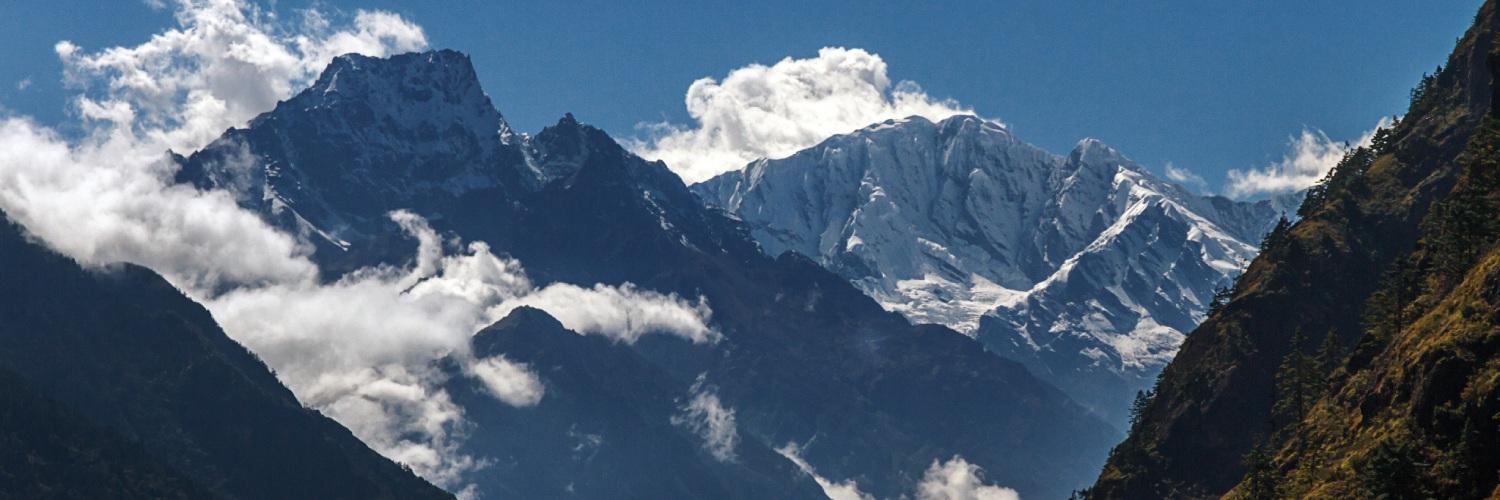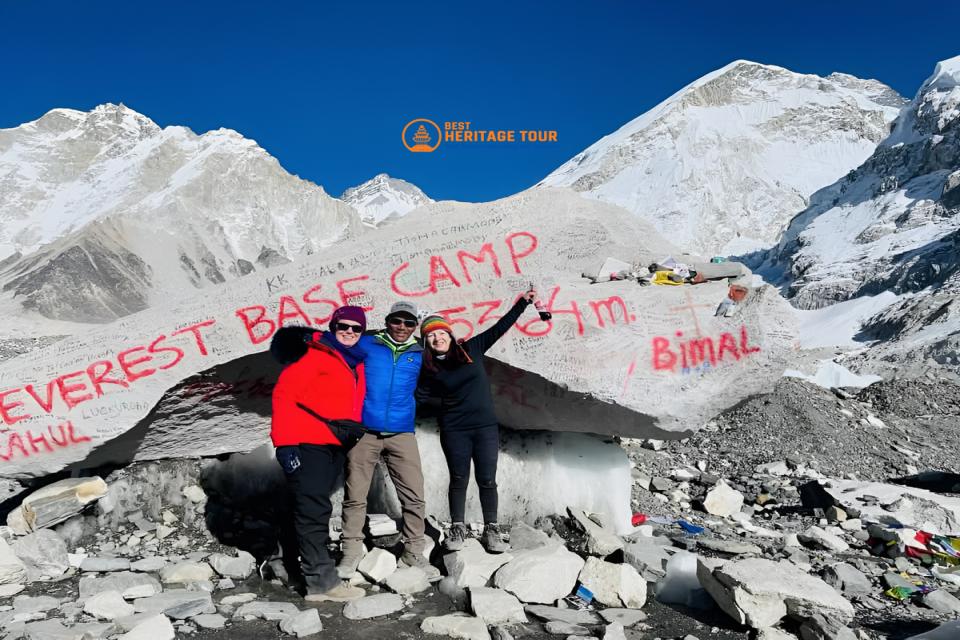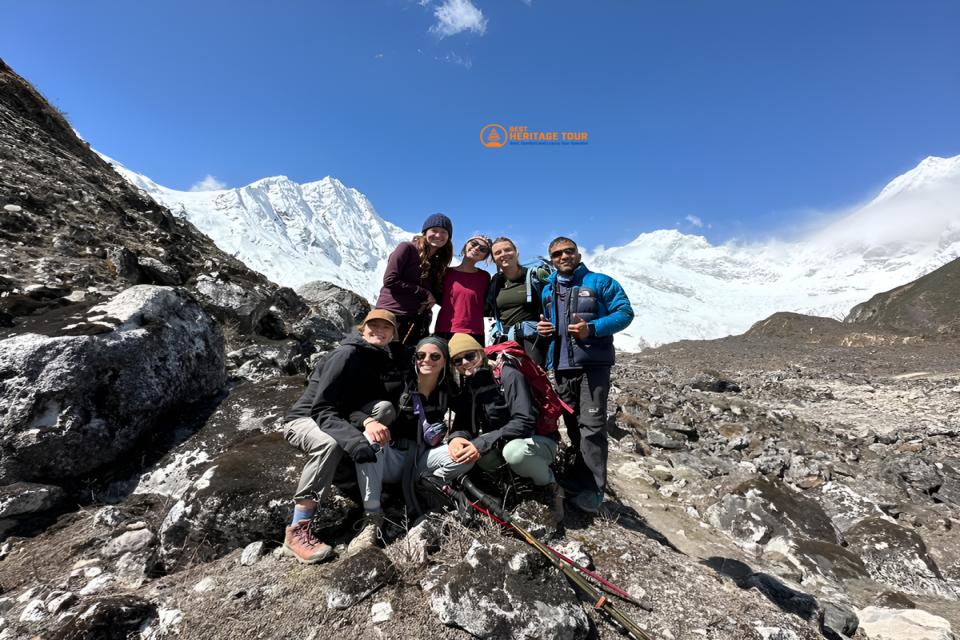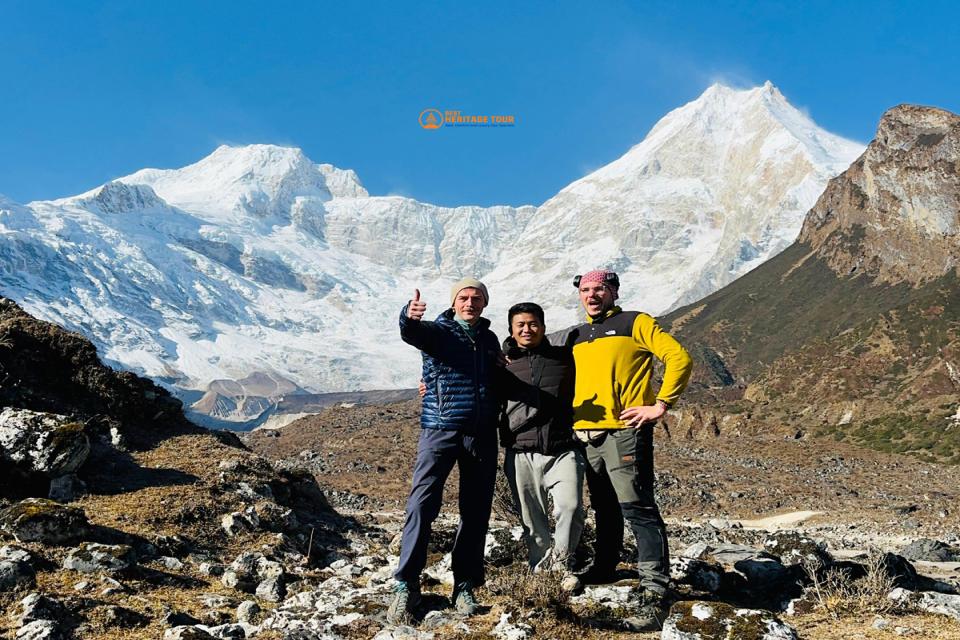Nestled in the remote corners of Nepal’s northern Gorkha district lies the sacred and secluded Tsum Valley, a region untouched by time and tourism. Once a restricted area, this mystical valley is now open to trekkers seeking authentic Himalayan culture, stunning mountain views, and peaceful trails far from the crowded routes of Annapurna or Everest.
The Tsum Valley Trek is a journey into the heart of Tibetan Buddhist heritage, where centuries-old monasteries, dramatic landscapes, and warm hospitality leave a lasting impact. Whether you're an experienced trekker or an off-the-beaten-path explorer, this guide will walk you through everything you need to know about planning your Tsum Valley adventure in 2025/2026, from itinerary and costs to culture and wildlife.
Where is Tsum Valley?
Tsum Valley is located in the northeastern part of Gorkha District, within the Manaslu Conservation Area of Nepal. This remote valley borders Tibet and was closed to outsiders until 2008. Its isolation has preserved a rich cultural and religious heritage distinct from the rest of Nepal.
Part of the greater Manaslu region, Tsum Valley lies northeast of the majestic Mount Manaslu (8,163m), the eighth-highest mountain in the world. The trek begins from the lower hill regions near Arughat or Machha Khola and gradually ascends through deep gorges and pine forests into the pristine Tsum Valley, surrounded by peaks like Ganesh Himal and Shingri Himal.
Why Choose the Tsum Valley Trek?
The Tsum Valley Trek offers a rare blend of spiritual heritage, untouched nature, and authentic Himalayan culture. Unlike crowded trails like Everest or Annapurna, Tsum Valley is a true off-the-beaten-path trek in Nepal, ideal for those seeking solitude, serenity, and purpose.
-
Sacred Buddhist Sites: Explore ancient monasteries like Mu Gompa and Rachen Gompa in this “Valley of Meditation.”
-
Peaceful Trails: Fewer trekkers mean a more intimate and tranquil trekking experience.
-
Stunning Scenery: Hike through forests, waterfalls, and alpine landscapes with views of Ganesh, Sringi, and Baudha Himal.
-
Cultural Immersion: Stay in teahouses, eat local food, and engage with the Tibetan-influenced Tsumba community.
-
Rich Wildlife: Spot Himalayan tahr, blue sheep, or even snow leopards in the Manaslu Conservation Area.
-
Affordable Trekking in Nepal: With fewer expenses than popular treks, the Tsum Valley Trek cost is budget-friendly.
-
Support Sustainable Travel: Your visit helps preserve local culture and uplifts remote mountain communities.
Tsum Valley Trek Itinerary
Below is a sample 18-day itinerary for the Tsum Valley trek from Kathmandu:
Day 1: Arrival in Kathmandu
Day 2: Trek preparation and permit process
Day 3: Drive to Machha Khola (8–9 hours)
Day 4: Trek to Jagat (1,410m)
Day 5: Trek to Lokpa (2,240m) – Entrance to Tsum Valley
Day 6: Trek to Chumling (2,386m)
Day 7: Trek to Chhokang Paro (3,031m)
Day 8: Trek to Nile (3,361m)
Day 9: Trek to Mu Gompa (3,700m) – Day trip to Dhephu Doma
Day 10: Acclimatization and exploration around Mu Gompa
Day 11: Trek back to Chhokang Paro
Day 12: Trek to Chumling
Day 13: Trek to Lokpa
Day 14: Trek to Jagat
Day 15: Trek to Machha Khola
Day 16: Drive to Kathmandu
Day 17: Leisure day in Kathmandu
Day 18: Departure
Optional: Combine with the Manaslu Circuit Trek for a 21–25 day adventure.
Tsum Valley Trek Difficulty and Altitude
The Tsum Valley Trek is a moderate to challenging trek, mainly due to its length, remoteness, and lack of high-end infrastructure. However, it doesn’t reach extreme altitudes like Everest Base Camp or Tilicho Lake, making it accessible for most trekkers with decent physical fitness and some prior hiking experience.
Trek Difficulty Level: Moderate to Challenging
Here’s a breakdown of the difficulty factors:
i. Trail Conditions:
- The trail includes steep ascents and descents, narrow cliffside paths, forested trails, and rocky steps.
- River crossings and suspension bridges are common.
- Trail conditions can be slippery during monsoon or icy in late autumn and winter.
ii. Infrastructure:
- Teahouses are basic, with limited facilities and simple meals.
- There’s no access to ATMs or mobile networks in most of the valley.
- Expect cold showers, shared toilets, and few opportunities for electricity or charging devices.
iii. Endurance:
- The average walking time per day ranges from 5 to 7 hours, with a few longer days depending on your pace and itinerary.
- Rest days are limited unless you build extra acclimatization or exploration days into your plan.
Tsum Valley Trek Altitude Profile
|
Location |
Altitude (meters) |
|---|---|
|
Machha Khola |
870m |
|
Jagat |
1,340m |
|
Lokpa |
2,240m |
|
Chumling |
2,386m |
|
Chhokang Paro |
3,031m |
|
Nile |
3,361m |
|
Mu Gompa (highest) |
3,700m |
|
Rachen Gompa |
3,240m |
The maximum altitude reached during the trek is approximately 3,700 meters at Mu Gompa, which significantly reduces the risk of altitude sickness compared to higher Himalayan treks. Nevertheless, you should still ascend gradually and stay hydrated to avoid Acute Mountain Sickness (AMS).
Best Time to Trek Tsum Valley
Choosing the right season is key for a safe and enjoyable Tsum Valley Trek. The valley is accessible year-round, but the best times are spring (March–May) and autumn (September–November).
-
Spring: Ideal for vibrant rhododendron blooms, stable weather, clear mountain views, pleasant temperatures (10°C–20°C), and great wildlife spotting.
-
Autumn: Offers crisp air, excellent visibility, dry trails, perfect trekking temperatures (10°C–15°C), and chances to experience local festivals like Lhosar.
-
Monsoon (June–August): Not recommended due to heavy rain, slippery trails, landslides, and leeches, though late August might be manageable for botanists.
-
Winter (December–February): Beautiful snowy landscapes and solitude for experienced trekkers but very cold nights, limited teahouses, and possible snow-blocked trails.
Quick Summary: Best Months for Tsum Valley Trek
|
Month |
Recommendation |
|---|---|
|
March–May |
Excellent (Spring bloom) |
|
June–August |
Avoid (Monsoon) |
|
September–November |
Excellent (Clear skies & festivals) |
|
December–February |
Possible but tough (Winter) |
Tip: Avoid winter and monsoon if combining Tsum Valley with the Manaslu Circuit, as the Larkya La Pass can be dangerous or closed.
Tsum Valley Trek Permits & Regulations
Tsum Valley is a restricted trekking region in Nepal, requiring special permits and a licensed guide. Solo trekking is not allowed, you must trek in a group of at least two people with a registered guide. Here’s what you need:
Required Permits:
1. Restricted Area Permit (RAP)
- Issued by: Department of Immigration, Kathmandu or Pokhara (through a registered trekking agency)
- Cost:
- USD 40 per person/week (from September to November)
- USD 30 per person/week (from December to August)
- Additional USD 7 per person/day beyond one week
- Purpose: Controls access to the culturally sensitive and border-adjacent Tsum region
Note: Requires you to travel in a group of at least two with a licensed Nepali guide
2. Manaslu Conservation Area Permit (MCAP)
- Issued by: Nepal Tourism Board
- Cost: NPR 3,000 (~USD 23) per person
- Needed for: Entry from Philim/Lokpa (southern part of the trail)
3. Annapurna Conservation Area Permit (ACAP)
- Issued by: Nepal Tourism Board
- Cost: NPR 3,000 (~USD 23) per person
- Needed for: Exiting via Dharapani if you extend your trek into the Manaslu Circuit or Annapurna Circuit
Tip: If you're using a trekking company (highly recommended), they’ll handle all permit logistics on your behalf.
Rules and Regulations:
- Solo trekking is not allowed in the Tsum Valley (due to its restricted status)
- You must be accompanied by:
- A licensed guide
- At least one other trekker (of any nationality)
- Must carry all permits at all times for checkpoint verification
- Stick to designated trekking trails
- Respect cultural sites, don’t touch prayer wheels or religious artifacts without permission
- Drones are not permitted without special approval (apply via CAAN and the Home Ministry)
Why So Many Permits?
These rules and permits:
- Help preserve the cultural integrity of the valley
- Ensure environmental sustainability through conservation fees
- Provide income to local communities
- Guarantee safety in a high-risk, remote trekking area
Tsum Valley Trek Cost (2025/2026)
Understanding the costs involved in trekking Tsum Valley is essential for effective budgeting. While this trek is generally more affordable than Everest or Annapurna routes, expenses can add up due to permits, guides, transportation, and accommodation.
Here’s a detailed overview of the Tsum Valley Trek cost to help you plan your adventure in 2025/2026:
1. Permits and Fees
- Restricted Area Permit (RAP): USD 30–40 (depending on season)
- Manaslu Conservation Area Permit (MCAP): NPR 3,000 (~USD 23)
- Annapurna Conservation Area Permit (ACAP): NPR 3,000 (~USD 23) (only if extending to Annapurna or Manaslu Circuit)
Approximate Total for Permits: USD 76–86
2. Guide and Porter Fees
- Licensed Guide: USD 25–35 per day
- Porter (optional): USD 15–25 per day
- Tips: USD 5–10 per day for guides and porters (recommended)
Estimated for 17 days: - Guide: USD 425–595
- Porter: USD 255–425
Note: Hiring a guide is mandatory; a porter is optional but helpful.
3. Accommodation and Food
- Teahouse lodging: NPR 300–700 (~USD 2.5–6) per night
- Meals (Dal Bhat, noodles, soups): NPR 400–800 (~USD 3.5–7) per meal
- Daily Food & Accommodation Budget: USD 10–15
- For 17 days: USD 170–255
4. Transportation
- Kathmandu to Machha Khola (Jeep or Bus): NPR 1,500–3,000 (~USD 12–25) one way
- Return Trip: Same cost
- Airport transfers and local taxis: NPR 1,000–2,000 (~USD 8–16)
Total transportation cost: USD 30–60
5. Gear and Miscellaneous
- Trekking gear rental (if needed): USD 5–10 per day
- Personal supplies (water, snacks, batteries): USD 5–10 per day
- Travel insurance: USD 50–100 (highly recommended)
- SIM card & mobile credit: USD 5–10 (limited network in Tsum)
Estimated miscellaneous: USD 100–200
Estimated Total Cost for Tsum Valley Trek (Per Person)
|
Expense |
Budget Trekker |
Mid-Range Trekker |
|---|---|---|
|
Permits & Fees |
USD 76 |
USD 86 |
|
Guide (17 days) |
USD 425 |
USD 595 |
|
Porter (optional) |
USD 255 |
USD 425 |
|
Accommodation & Food |
USD 170 |
USD 255 |
|
Transportation |
USD 30 |
USD 60 |
|
Miscellaneous |
USD 100 |
USD 200 |
|
Total (Without Porter) |
~USD 801 |
~USD 1,196 |
|
Total (With Porter) |
~USD 1,056 |
~USD 1,621 |
Note: Prices may vary based on season, group size, and agency.
Accommodation and Food in Tsum Valley
Unlike the more developed trekking routes in Nepal, the Tsum Valley Trek offers a raw, rustic, and deeply local experience when it comes to accommodation and meals. The trail is dotted with basic teahouses run by local families, offering modest hospitality that complements the remote and spiritual nature of the region.
i. Teahouse Accommodation: Basic but Heartwarming
Expect simple teahouses with twin-sharing wooden rooms, foam mattresses, and blankets. Bring a -10°C rated sleeping bag for warmth.
- Shared squat toilets are common
- Hot showers (solar/bucket-style) cost ~NPR 200–300
- Device charging may cost NPR 200–400
- Limited electricity and no reliable Wi-Fi
- Monastery stays (e.g., Mu Gompa) offer unique experiences
ii. Food on the Trail: Simple, Filling, Local
- Dal Bhat (unlimited), Tibetan bread, thukpa, momo, tsampa, yak cheese
- Hot drinks: Milk tea, black tea, herbal tea, butter tea, instant coffee
- Water: Bottled (NPR 100–300) or boiled; bring purification tablets or a filter bottle
Note:
- Vegetarian/Vegan options are widely available
- Avoid meat in the upper Tsum due to freshness concerns
- Bring your own snacks and energy bars from Kathmandu
Trek Tips:
- Pack power banks/solar chargers
- Stay hydrated safely
- Be patient, food is freshly prepared and may take time
Cultural Highlights of Tsum Valley
-
Mu Gompa (3,700m): The largest and most sacred monastery in Tsum Valley, located near the Tibetan border. Home to over 100 monks, Mu Gompa offers basic lodging and breathtaking views of Ganesh Himal and Baudha Himal.
-
·Rachen Gompa (3,240m): A peaceful Tibetan Buddhist nunnery with over 80 nuns. Founded in 1905, it’s known for sacred murals, serene prayer rituals, and stunning traditional architecture.
-
·Milarepa’s Cave (Piren Phu): A sacred meditation site above Burji village where Milarepa is believed to have meditated. Features ancient shrines, mani walls, and panoramic valley views.
-
·Mani Walls, Chortens & Prayer Wheels: Scattered across the trail, these Buddhist monuments are key cultural landmarks. Always walk clockwise to respect local customs.
-
·Traditional Lifestyle: Locals maintain unique customs like polyandry, yak herding, and wear traditional Tibetan attire. Homes are made of stone and mud, and locals speak the Tsumke dialect.
-
·Buddhist Festivals: If you visit during festivals like Lhosar (Tibetan New Year) or Dharma ceremonies at Mu and Rachen Gompas, you'll witness masked dances, prayers, and vibrant cultural rituals.
What to Pack for Tsum Valley Trek
Tsum Valley’s weather varies from warm to freezing at high altitudes like Mu Gompa (3,700m). Here's the essential gear for the Tsum Valley Trek to stay safe and comfortable.
Essential Clothing:
- Base layers: Moisture-wicking shirts, thermal tops/bottoms
- Mid layers: Fleece or insulated jacket
- Outerwear: Waterproof shell jacket & pants
- Trousers: 2 trekking pants, 1 warm thermal
- Accessories: Wool socks, sun hat, beanie, gloves, buff/scarf
Footwear:
- Waterproof trekking boots
- Camp shoes/sandals
- Optional: gaiters (for snow/monsoon leeches)
Bags:
- 40–60L backpack + rain cover
- 15–20L daypack
- Dry bags or packing cubes
Sleeping Gear:
- Sleeping bag (rated -10°C or lower)
- Liner & pillow
Toiletries:
- Quick-dry towel, biodegradable soap
- Sunscreen (SPF 50+), lip balm with SPF
- Toilet paper, wipes, hand sanitizer
First Aid:
- Personal meds, Diamox (altitude), painkillers
- ORS, band-aids, blister care
- Water purifier/tablets
Electronics:
- Headlamp, power bank, camera/phone
- Travel adapter (Nepal: C, D, M plugs)
Documents:
- Passport & visa
- Tsum Valley trekking permits (RAP, MCAP, ACAP)
- Insurance for high-altitude trekking
- Cash (no ATMs en route)
Extras (Optional but Handy):
- Snacks, reusable utensils, duct tape
- Cards, book/Kindle, small gifts for locals
Seasonal Add-ons:
- Winter: Down pants, thick gloves, snow gaiters
- Monsoon: Rain gear, leech socks, quick-dry clothes
Tip: Keep your pack under 10–12 kg. Porters share a max of 20–25 kg between 2 trekkers.
Wildlife and Nature in Tsum Valley
Tsum Valley, within the Manaslu Conservation Area, is a biodiversity hotspot offering trekkers a rare glimpse of Himalayan wildlife and stunning natural beauty.
Wildlife Species:
- Himalayan Tahr: wild goats on rocky slopes
- Blue Sheep (Bharal): high-altitude grazers
- Musk Deer: shy forest dwellers
- Snow Leopard (rare): elusive apex predator
- Red Panda: rare and protected species
Birdlife:
- Nepal’s national bird, the Monal Pheasant
- Himalayan Griffon Vultures
- Snow Partridges and various finches and warblers
Flora:
- Spectacular rhododendron blooms in spring
- Oak, pine, and fir forests
- Alpine wildflowers and medicinal herbs
Conservation and Responsible Trekking
As part of a protected conservation area, the Tsum Valley requires trekkers to practice responsible tourism:
- Stick to marked trails to minimize environmental impact
- Carry out all non-biodegradable waste
- Avoid disturbing wildlife or feeding animals
- Support local conservation initiatives by respecting community rules
Sustainable and Responsible Trekking in Tsum Valley
Tsum Valley is one of Nepal’s most pristine and culturally rich trekking destinations, requiring responsible and sustainable travel to protect its fragile ecosystem and unique Tibetan Buddhist culture.
Eco-Friendly Trekking Tips:
- Pack in, pack out all waste, including biodegradable trash
- Use reusable water bottles, straws, and bags to reduce plastic
- Avoid single-use plastics
- Choose biodegradable soaps and sunscreens safe for nature
Respect Local Culture:
- Dress modestly, especially near monasteries
- Ask permission before photographing locals
- Follow Tibetan Buddhist customs (e.g., walk clockwise around mani walls)
- Support local traditions and festivals
Reduce Waste & Carbon Footprint:
- Travel light to ease burden on porters
- Use shared or local transport
- Avoid drones without permission
- Support community conservation projects
Support Local Economy:
- Hire licensed local guides and porters
- Stay in family-run teahouses
- Respect energy-saving practices in accommodations
By trekking responsibly, you help preserve Tsum Valley’s natural beauty and sacred culture for generations to come.
Tsum Valley vs Manaslu Circuit: Which is Better?
If you’re deciding between the Tsum Valley Trek and the Manaslu Circuit Trek, here’s a clear comparison to help you pick the best fit for your Nepal trekking adventure:
|
Aspect |
Tsum Valley Trek |
Manaslu Circuit Trek |
|---|---|---|
|
Length & Duration |
14–18 days |
14–21 days |
|
Highest Altitude |
~3,700m (Mu Gompa) |
5,160m (Larkya La Pass) |
|
Difficulty Level |
Moderate to challenging |
Challenging to very challenging |
|
Crowd Levels |
Very low; remote and off-the-beaten-path |
Moderate; gaining popularity post-2015 |
|
Permits Required |
Restricted Area Permit (RAP) + Manaslu Conservation Area Permit (MCAP) |
Restricted Area Permit + MCAP |
|
Cultural Experience |
Deep Tibetan Buddhist culture; isolated villages |
Rich Tibetan culture plus diverse ethnic groups |
|
Accommodation |
Basic teahouses and monastery stays |
Well-developed teahouses and lodges |
|
Wildlife & Nature |
Pristine biodiversity; chance to see rare species |
Rich biodiversity; alpine and sub-alpine zones |
|
Trail Conditions |
Narrow, steep trails with minimal infrastructure |
Well-marked but physically demanding |
Which Trek Is Better for You?
- Choose Tsum Valley Trek if you want a quiet, culturally immersive experience in a remote, pristine environment with moderate trekking challenges.
- Opt for Manaslu Circuit Trek if you seek a longer, high-altitude adventure with diverse landscapes, more facilities, and a tougher physical challenge.
Both treks offer incredible Himalayan views and rich cultural encounters, but your choice depends on your fitness level, trekking style, and preference for solitude versus more developed routes.
Is the Tsum Valley Trek Worth It?
Absolutely yes! The Tsum Valley Trek offers much more than stunning Himalayan mountain views, it’s a journey into one of Nepal’s most spiritually rich and culturally preserved regions. For trekkers seeking peace, authentic Tibetan Buddhist culture, and a remote off-the-beaten-path adventure, Tsum Valley delivers an unforgettable and transformative experience.
This trek is not just about the landscape; it’s a pilgrimage into purity, where ancient monasteries, sacred rituals, and pristine nature create a deeply meaningful Himalayan journey. If you value cultural immersion alongside breathtaking scenery, the Tsum Valley Trek is definitely worth it.
Conclusion
The Tsum Valley Trek is more than just a trek, it’s a journey deep into the heart of Himalayan culture, spirituality, and untouched wilderness. This unique route offers a rare blend of adventure, tranquility, and cultural immersion, making it one of Nepal’s finest off-the-beaten-path treks.
For those planning to go trekking in Nepal in 2025 or 2026 and seeking a meaningful, unforgettable Himalayan experience, the Tsum Valley stands out as a top choice: sacred, serene, and truly special.
Ready to Trek the Tsum Valley in 2025/2026? Let Best Heritage Tour guide you through this extraordinary Himalayan journey with expert local guides, reliable permits, comfortable transport, and personalized trekking plans. You focus on the mountains, we handle the logistics!
Book now or get more info now:
- Phone/WhatsApp/Viber: +9779851149197 / +9779810043046
- Email: bestheritagetour@gmail.com / info@bestheritagetour.com
- Website: www.bestheritagetour.com
- Location: Thamel Marg, Kathmandu, Nepal
Reserve your spot today and experience the breathtaking Tsum Valley Trek with trusted local experts!
Author: Best Heritage Tour
Date: 22nd June, 2025




